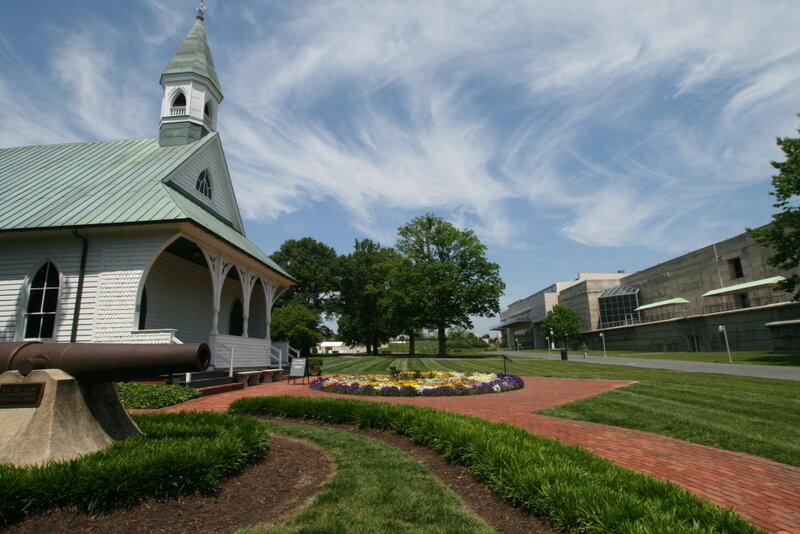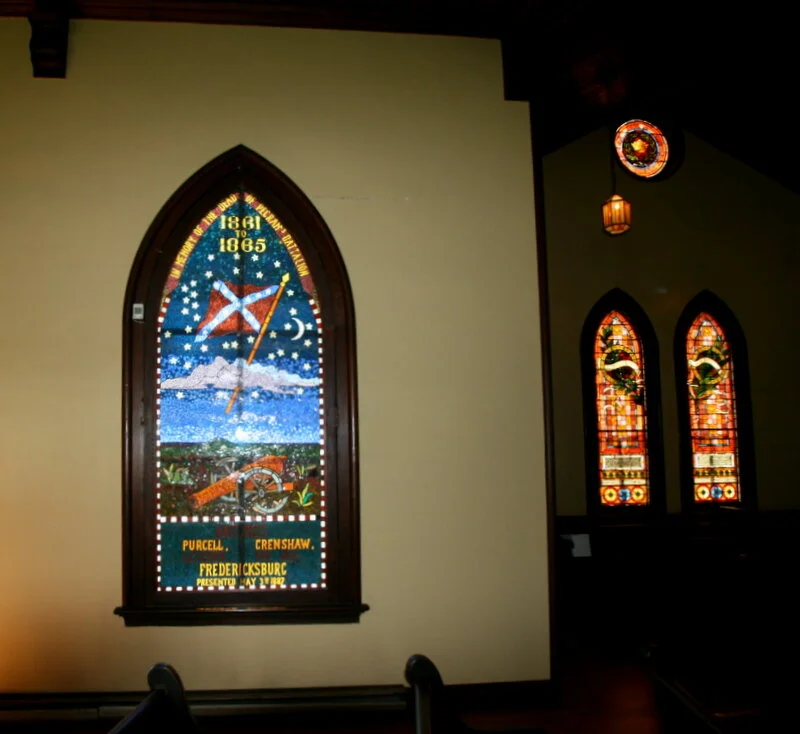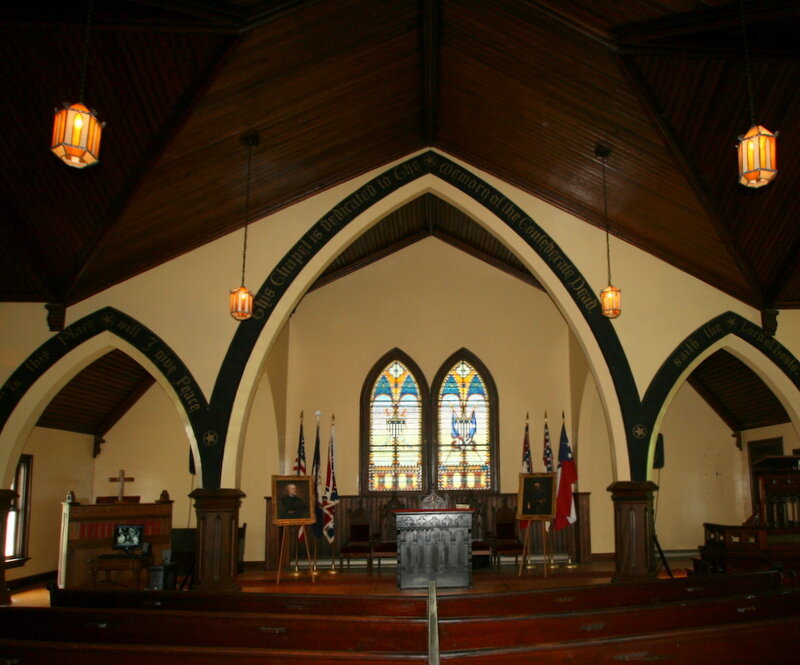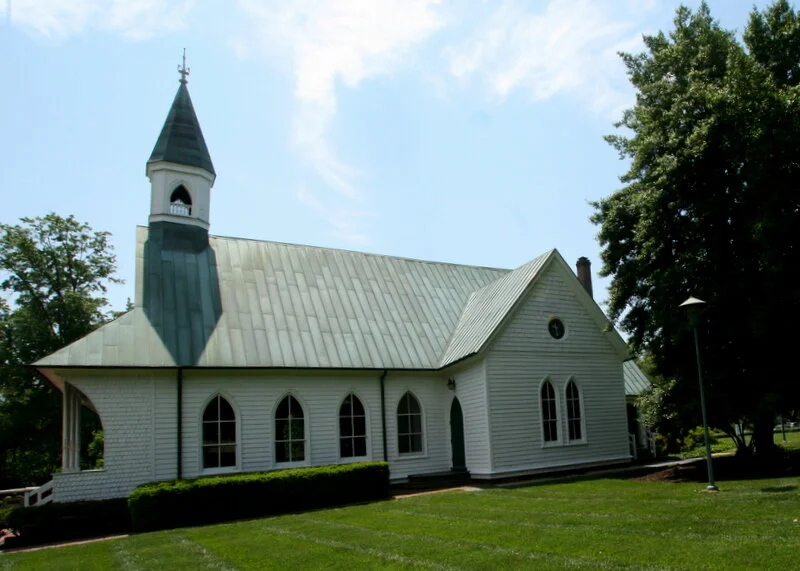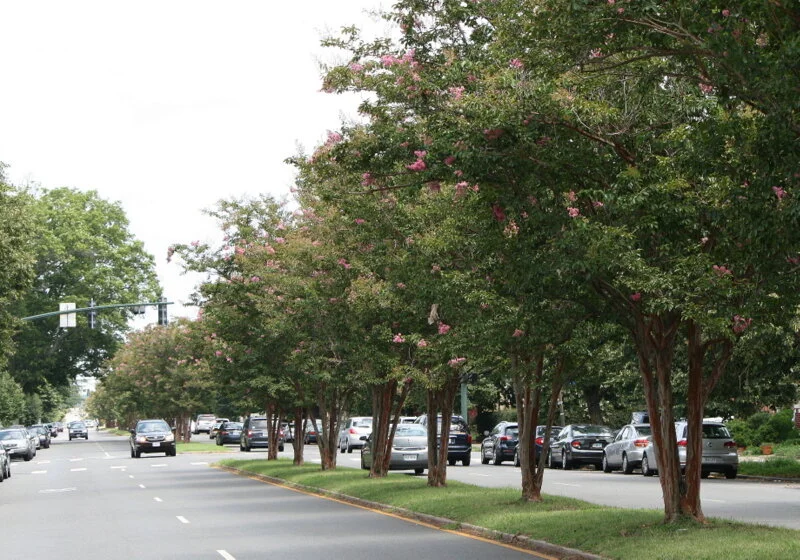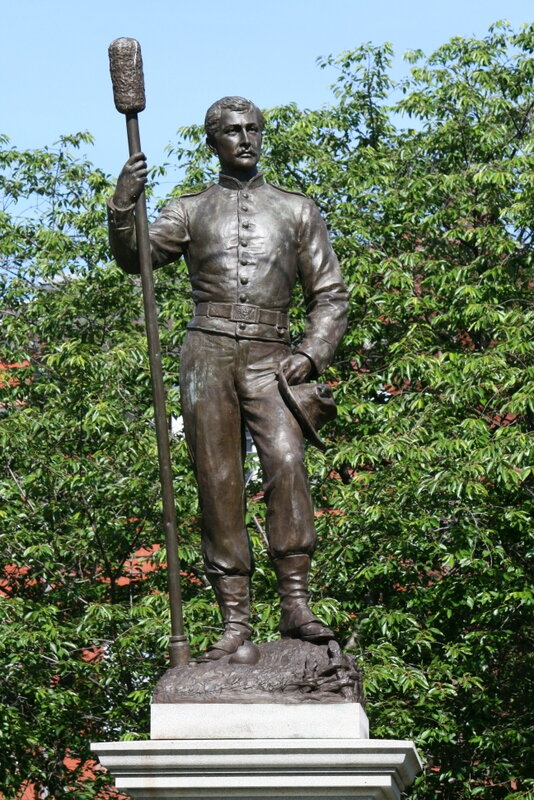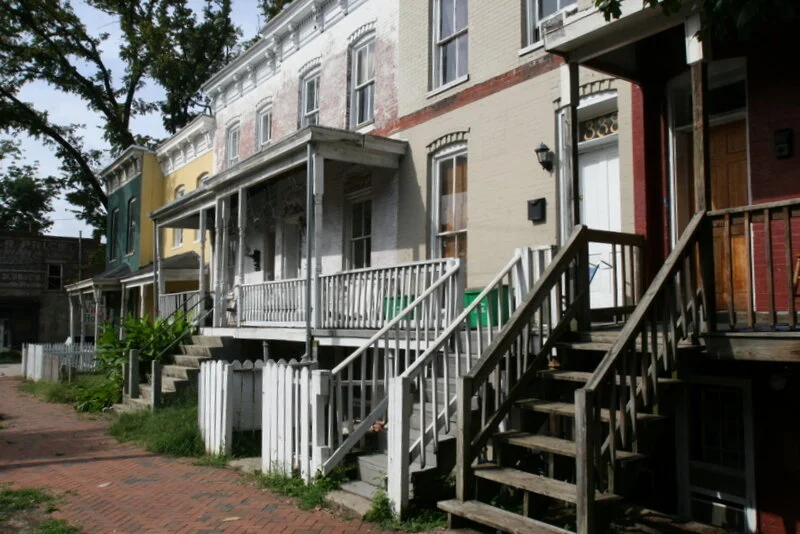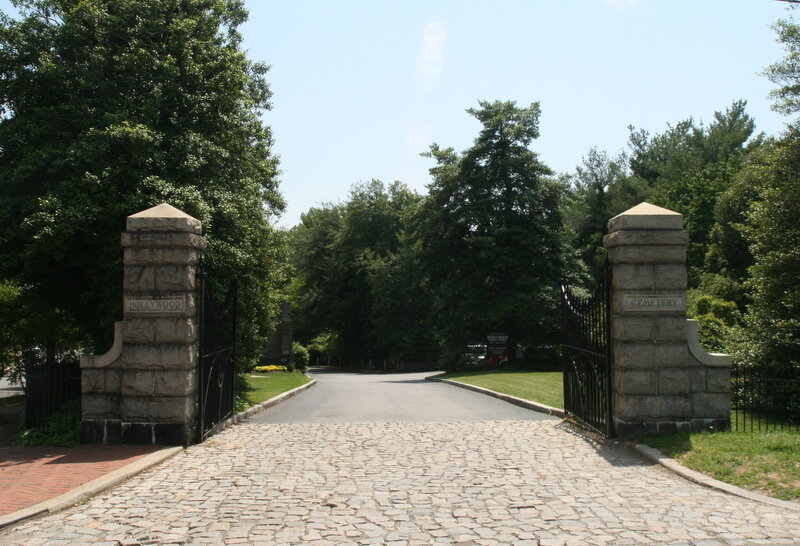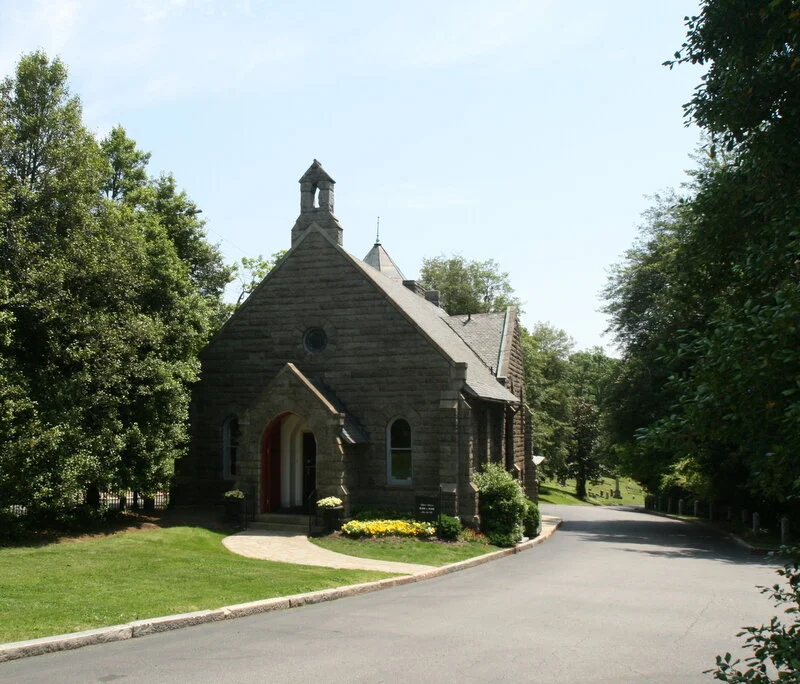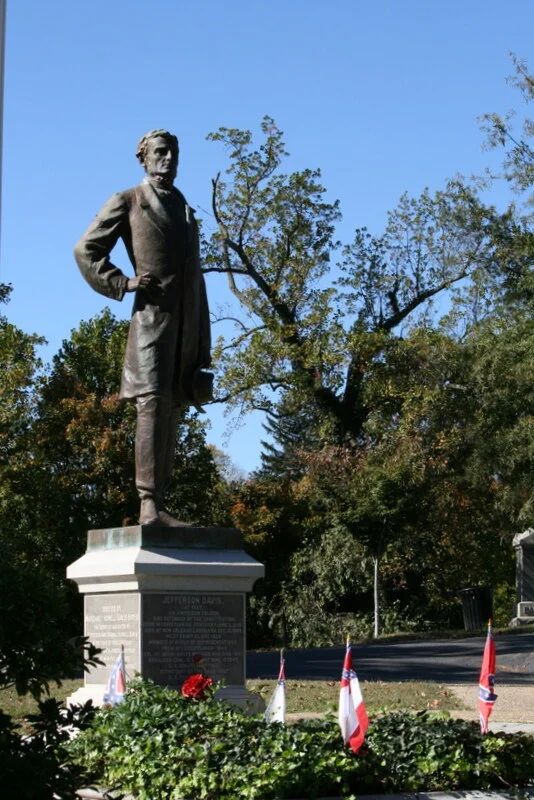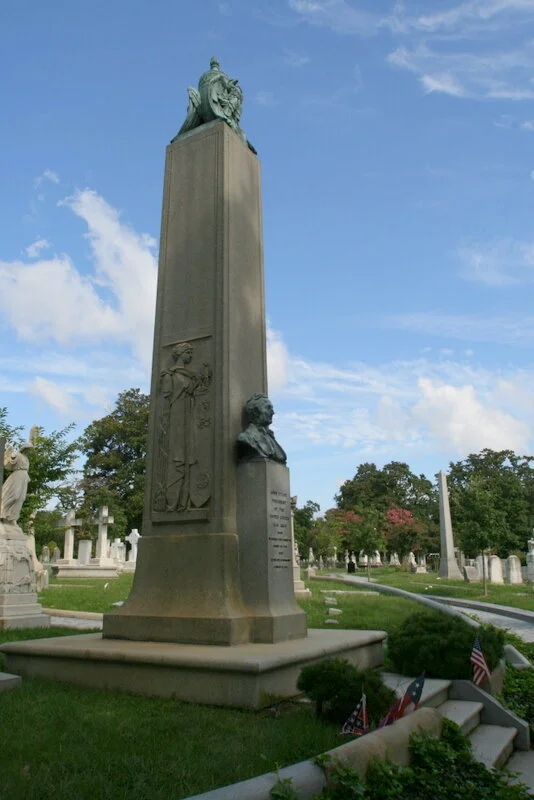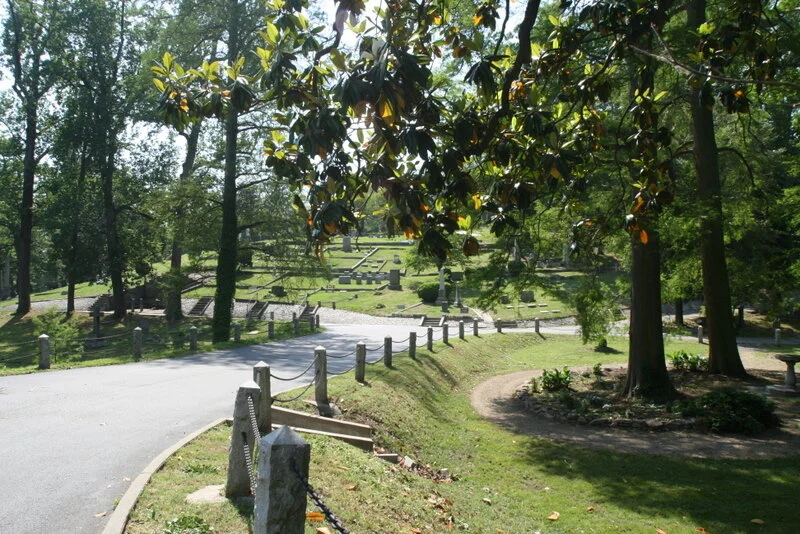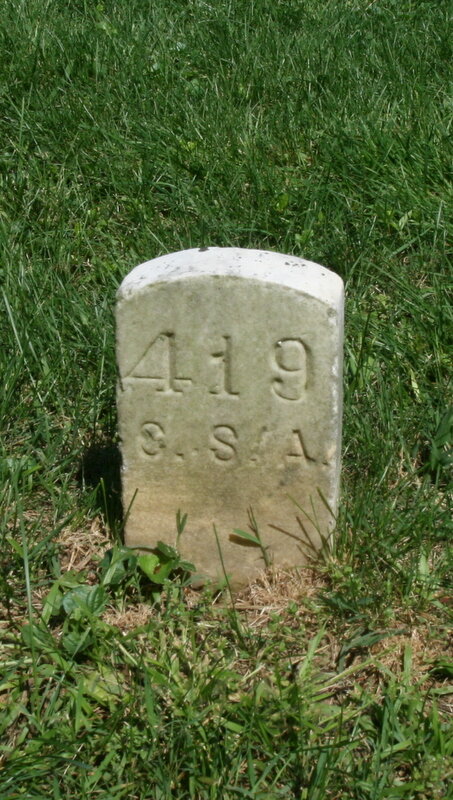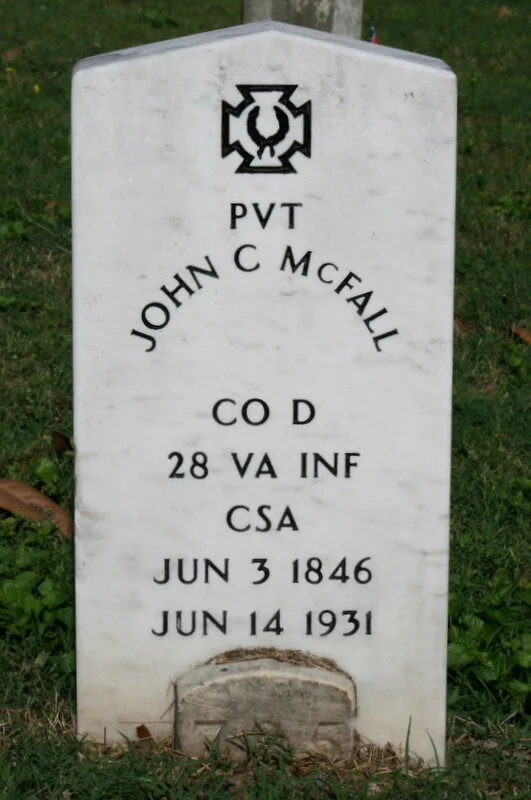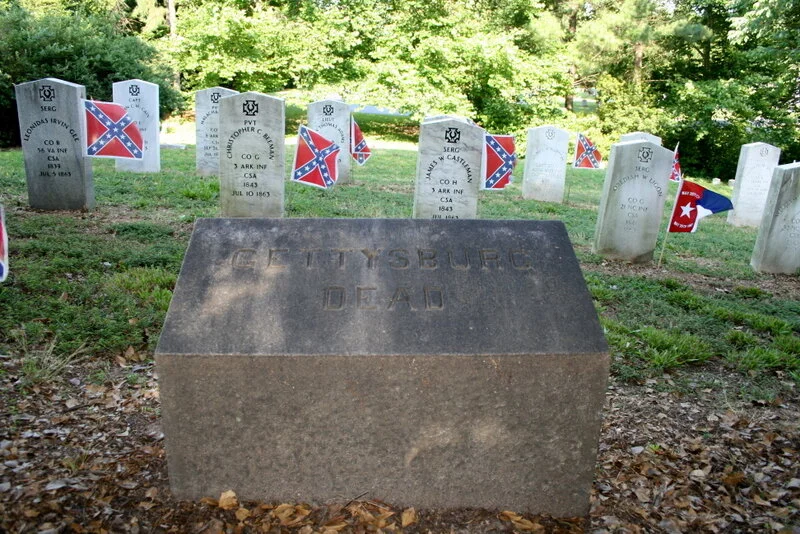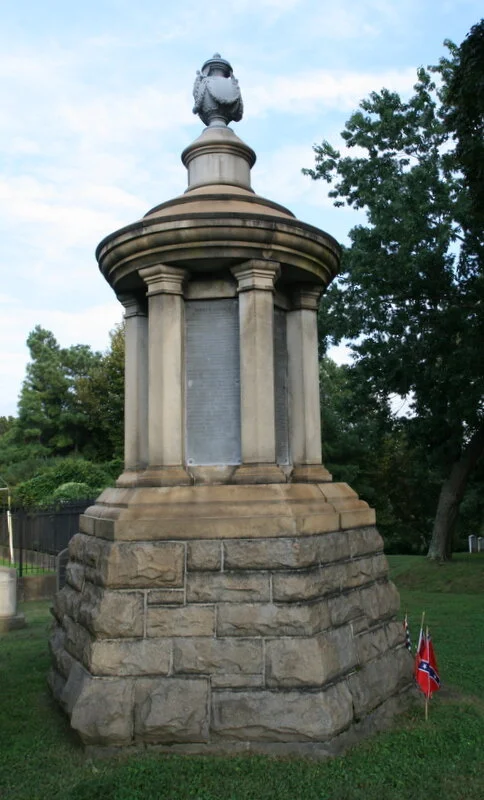
Chapter 17 - Confederate Memorial Chapel, Oregon Hill & Hollywood Cemetery
The Confederate Memorial Chapel stood tucked away behind the Virginia Museum of Fine Arts on the Boulevard.
The dark interior flooded with sunlight, breaching the stained-glass windows, firing up their mosaics of cannons and rebel flags.
When the reverend finished, he gazed upward to the bare wooden buttresses supporting the sanctuary’s ceiling then looked back down at the bereaved and spoke.
Carter and Wendell, shabbily dressed for the occasion but managing to wear shirts and shoes, stood across from the front of the chapel under a black oak.
When Gordon came out of the chapel, he moseyed over to the side lawn for a quick smoke before joining the procession. He settled by a hemlock tree and pulled out a cigar.
The solemn column headed down the Boulevard along the median of crepe myrtles, sprouting pink, papery blooms in the late morning heat.
They turned at the Stonewall Jackson statue for Marion’s last ride down Monument Avenue.
The column marched straight until it arrived at Harrison Street then cut through VCU, passing the monument to the Richmond Howitzers.
The cavalcade wound its way around the university and entered the broken streets of Oregon Hill, a white working-class neighborhood and student ghetto, sung about in the unflattering 1992 pop song by the Cowboy Junkies.
The neighborhood had been named in the 1840s after the Oregon Territory, because to Richmond residents at the time, the area seemed as far west of downtown as the territory. Oregon Hill had its heyday between the Civil War and World War II, serving as a quarter for the workers of Tredegar Iron Works and Albemarle Paper Company located below the hill on the James River.
The historic neighborhood had been saved from VCU’s expansion plans.
The procession continued to the entrance of Hollywood Cemetery. The head of the column stopped just inside the gates of the cemetery . . . .
They marched past the stone mortuary chapel now serving as the cemetery’s office and
down the hill into the city of the dead where every blue-blooded Richmonder wanted to reside someday.
Richmond had been the capital of the Confederacy, and Hollywood Cemetery was its shrine. It was the final resting place for the president of the Confederate States of America Jefferson Davis,
twenty-five Confederate generals including George Pickett and Jeb Stuart,
and over 18,000 Johnny Rebs.
Also buried here were two other presidents: James Monroe
and John Tyler.
The 135-acre garden cemetery was named after its numerous holly trees. Hollywood was designed to be as much a park as a cemetery, with impressive views of the James River and the Richmond skyline.
The pastoral memorial remained one of Richmond’s more popular “parks.” Tall ancient trees shaded carriage lanes, winding over hills and dales
covered with artistic memorials of stone, bronze, and iron.
At the bottom of the hill, the procession crossed a bridge that once bordered a pond that was drained and filled shortly after World War II.
The caravan moved on up Confederate Avenue, where Confederate flags dotted graves.
At the top of the hill, they took the horseshoe curve around to the cemetery’s largest memorial, a granite-block pyramid. Forty-five feet at the base and ninety feet tall, the monolith was consecrated to the Confederate dead and watched over them.
The sorrowers went down a short hill and back up another to a newer section of the cemetery.
Gordon’s party split from the herd and slipped down into a dale where a weeping willow grew. They parted the slender hanging willow branches like hippie door beads to enter a bottom acre filled with small grave markers and a few larger markers scattered among them.
This was the section of the cemetery reserved for the Confederate veterans who had lived at the Old Soldiers' Home on the Boulevard. The small stones, with just enough room to inscribe a number and C.S.A., were provided when the Confederate veterans died, in most cases, well into the twentieth century.
The larger stones, standard US government-issued markers like the ones in Arlington National Cemetery, were replacements for the smaller ones, usually put there by a soldier’s descendants.
Six years after the war was over, the Confederate dead still lay hastily buried in farmers’ fields around Gettysburg. The Rebels weren’t allowed to be buried in the national cemetery established on the Gettysburg battlefield. So in 1872 and 1873, the remains of 2,935 Confederate soldiers who had died at Gettysburg were brought back to Richmond and reinterred on this hillside.
General George E. Pickett’s grave marker loomed over some of the men who died in the infantry assault named after the general.
